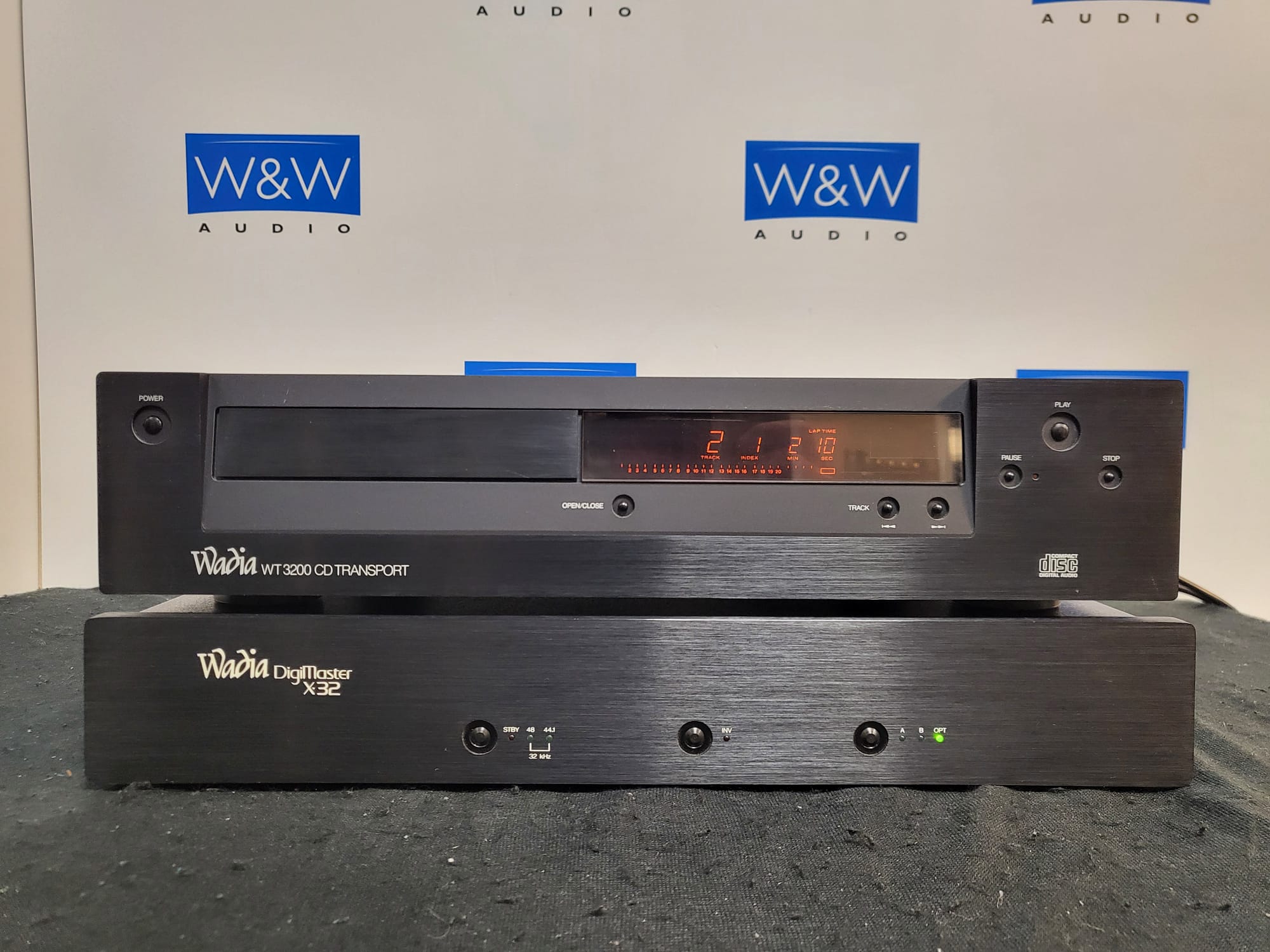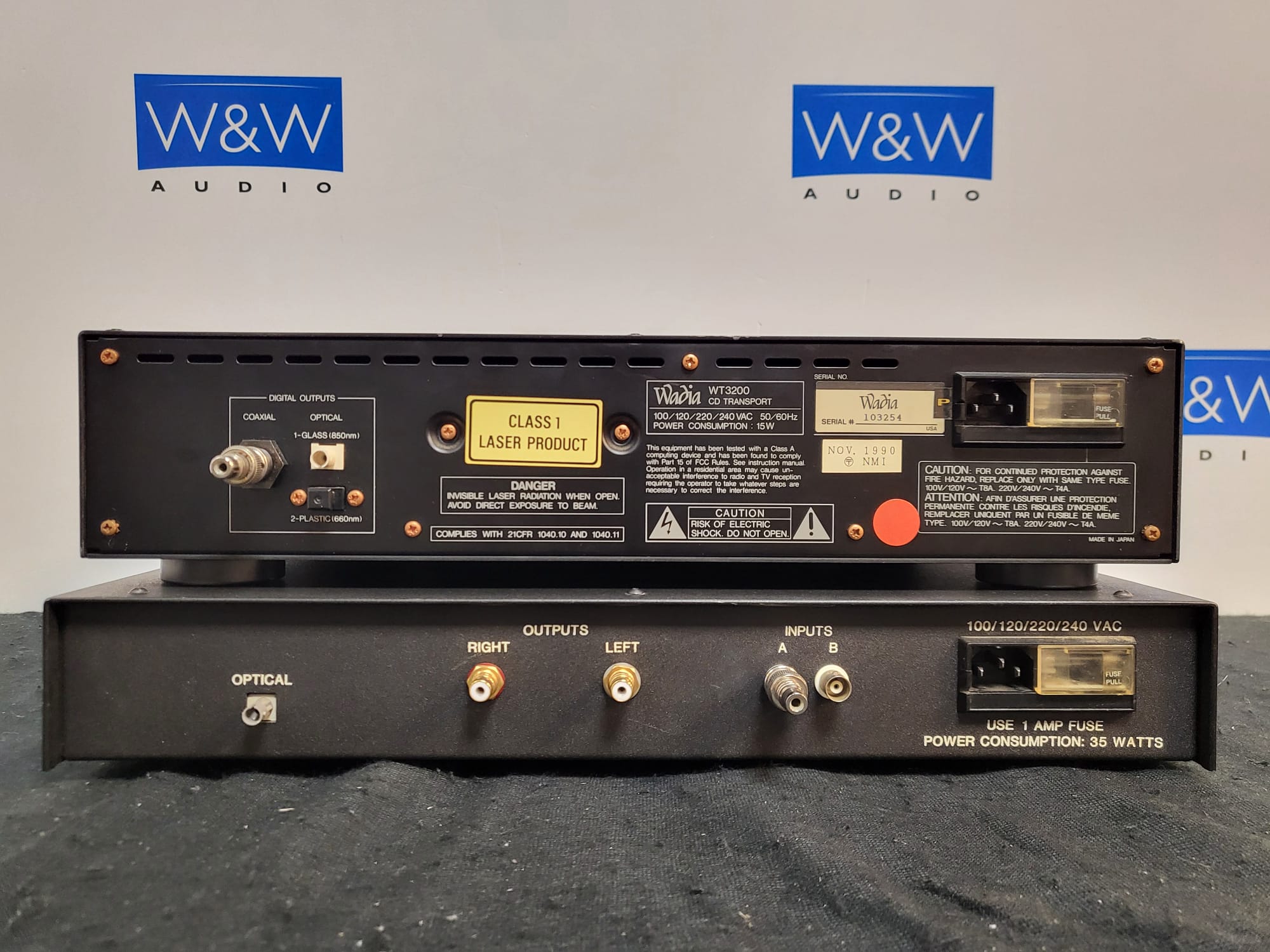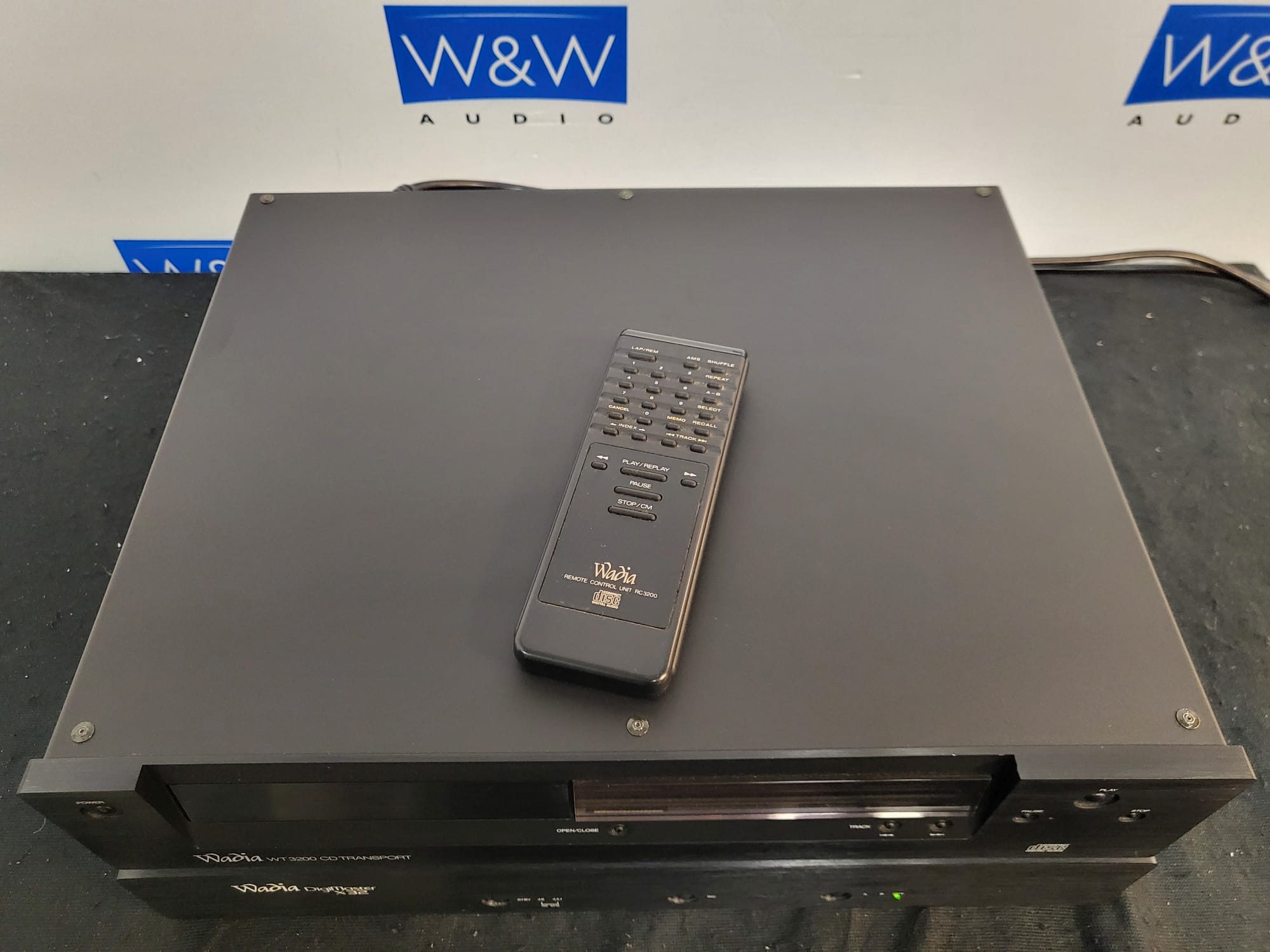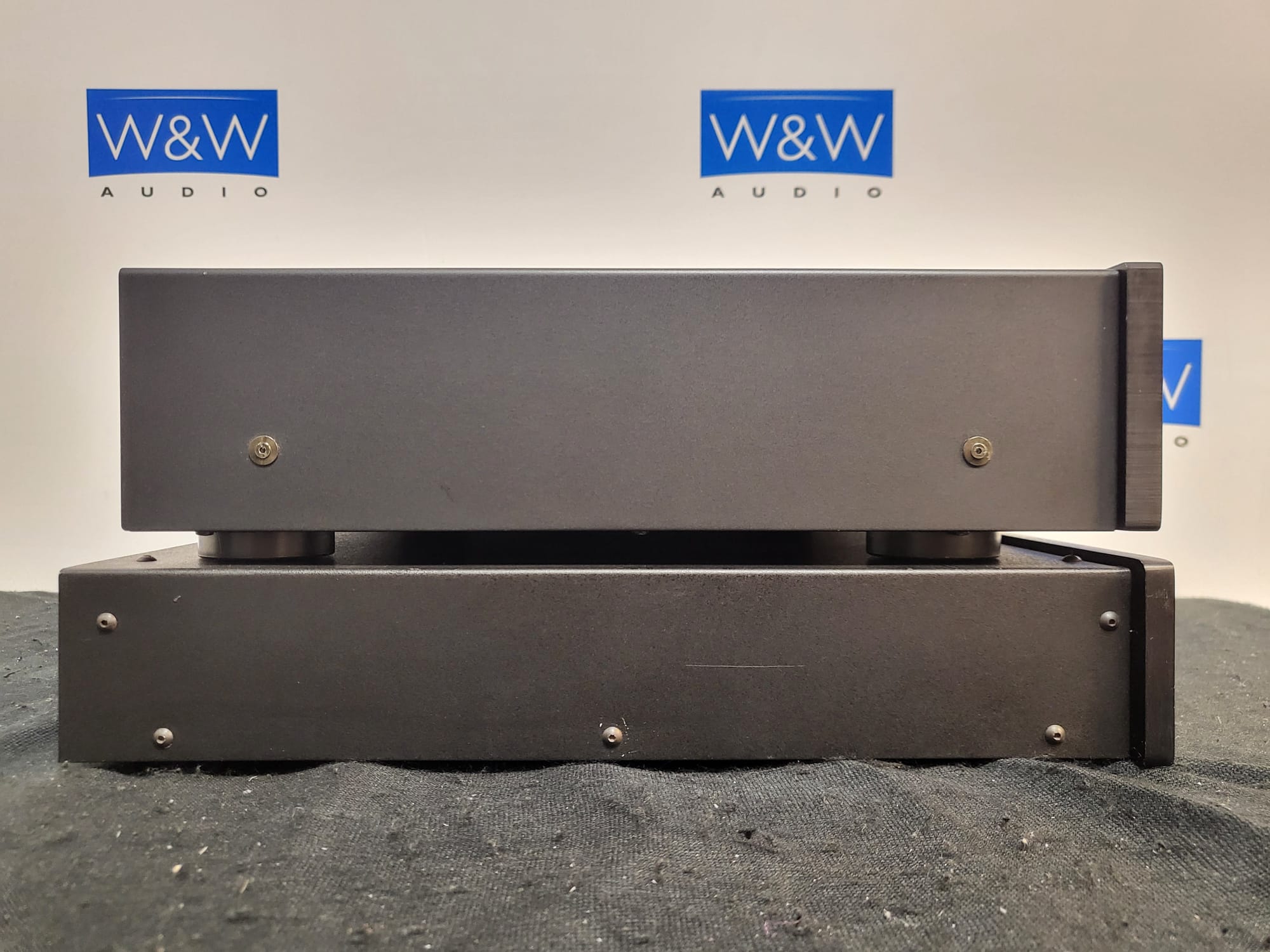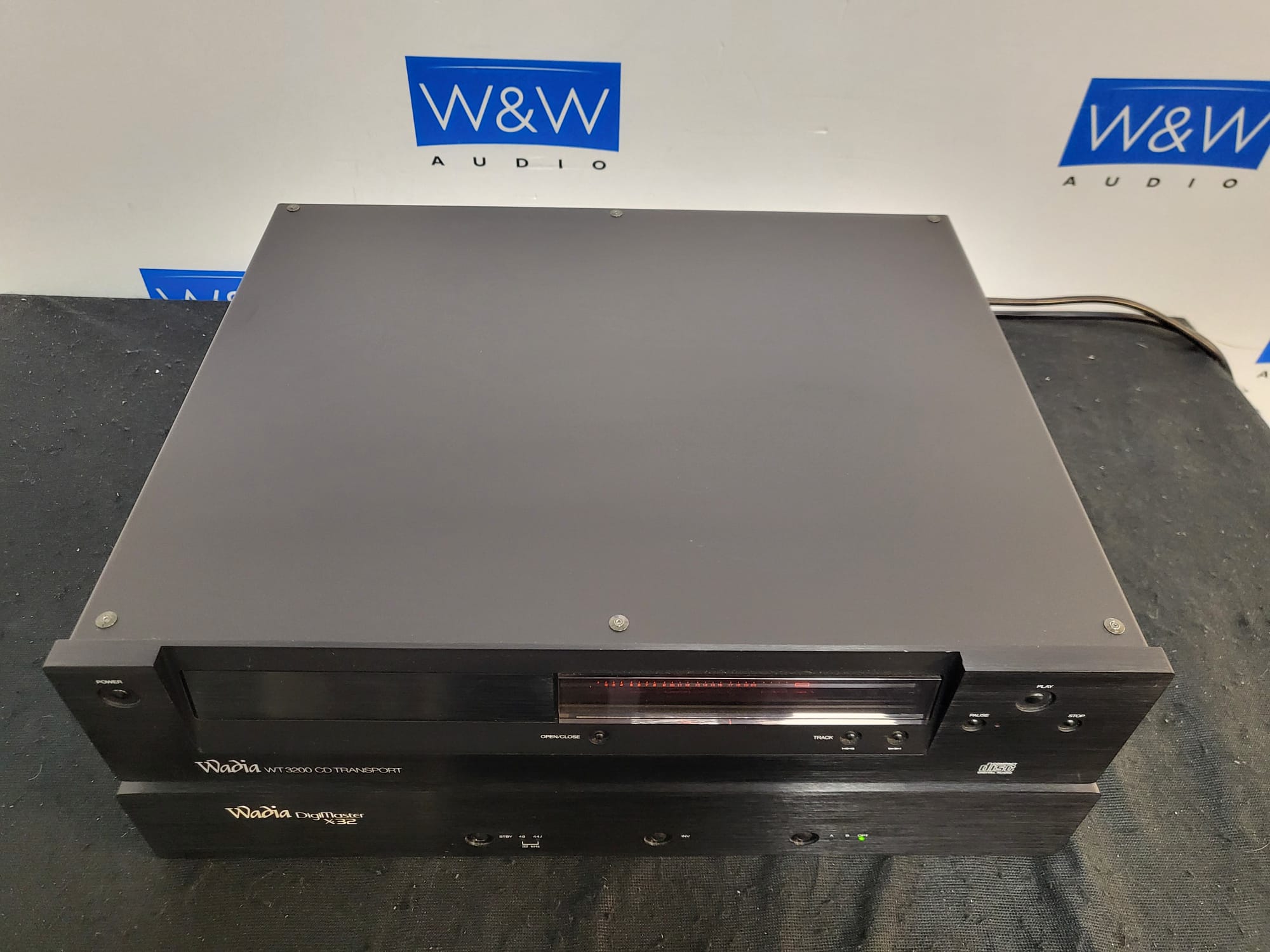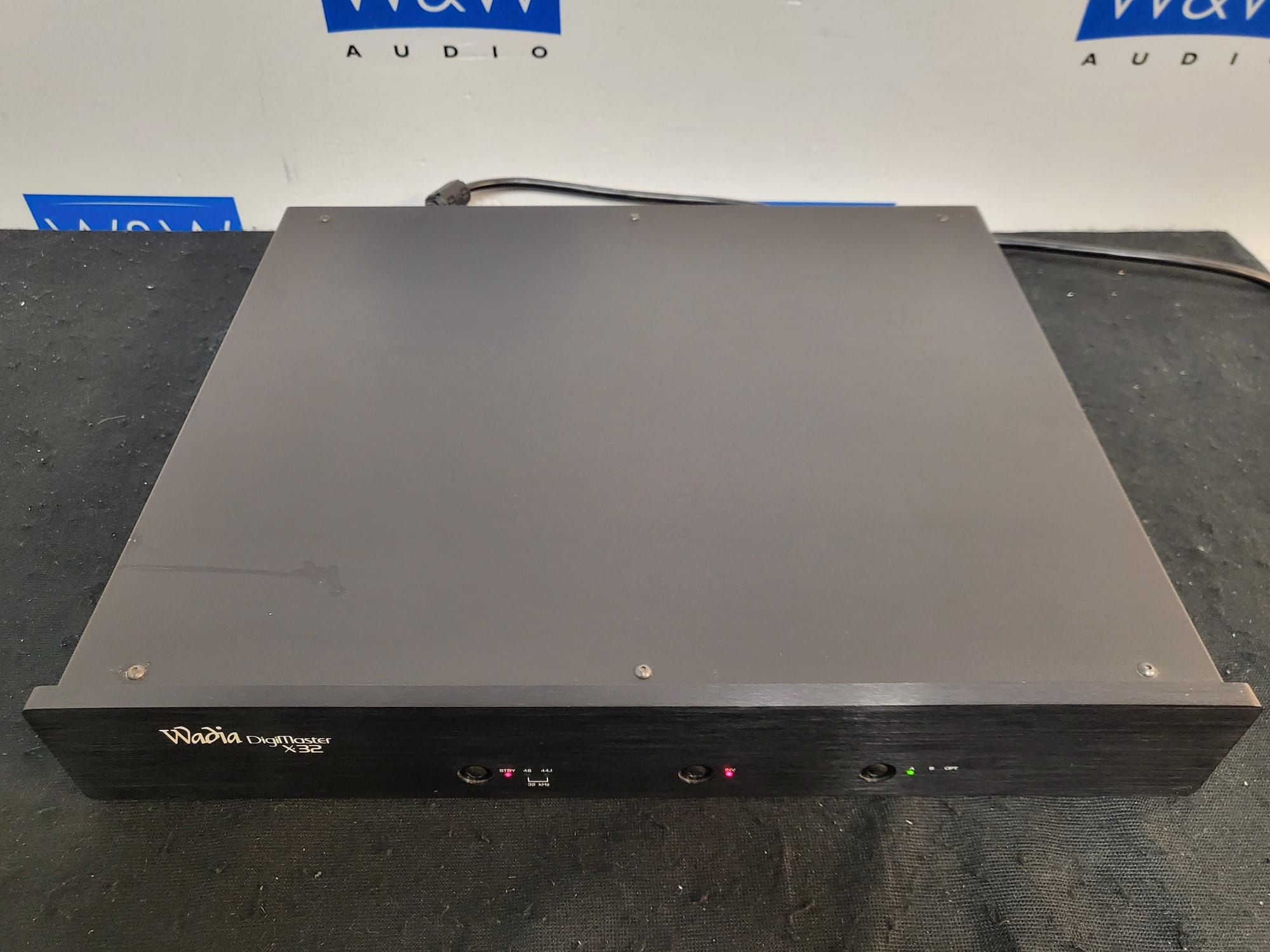Wadia WT3200 and Wadia Digimaster X32
Beschrijving / Description
WT3200 review
Overall, this is one of the best transports in existence, probably the VRDS machines do not sound better, and even if they do - the VRDS/Sony parts are impossible to find as spares. This WT3200 is easy to repair and it should work forever. Of course - they need a belt service every 10 years or so, as every CDM1 transport. The Marantz 95 which it really is - is cheaper and better looking, but it will not be a Wadia. So your snobbish part will want Wadia anyway. Considering all pros and cons - it is a winner. Just be careful - how much you will pay. If you already have it - keep it !
Wadia X32
The X-32's eight DACs (four per channel) are custom-made to Wadia's specifications. Rather than perform I/V (current to voltage) conversion on a separate chip (usually an op-amp) as is typical, I/V conversion takes place in the DAC. Since the four DACs must essentially operate as a unit, matching is critical. Wadia claims the DACs within each array are matched to within a tenth of an LSB (Least Significant Bit). In addition, DAC consistency is critical since a single MSB trimmer adjusts four DACs. Any performance differences would show up as poor low-level linearity since the MSB trimmer can be set optimally for only one DAC.
Unlike its big brother, the Wadia 2000, the X-32 is a typical-looking slim black box. The 3/16"-thick front panel holds three square pushbutton switches, accompanied by LEDs indicating the respective switch's position. The left-most pushbutton activates the unit by selecting either the 44.1kHz or 48kHz input. A "Standby" indicator illuminates if neither input is selected. When taken out of Standby mode, the unit will automatically recognize and decode the input sampling frequency. The center switch inverts polarity (in the digital domain), with a red LED to indicate absolute phase reversal. The right switch selects between inputs, two coaxial and one optical. Again, a row of LEDs indicates which input is selected. The "A" input is automatically selected upon power-up. Interestingly, the small, square LEDs and their nomenclature are slanted at about 45" with respect to the front-panel top and bottom. No power on/off switch is provided. Instead, the user is encouraged to leave the unit continuously powered.
The X-32's rear panel holds an IEC AC power-cord socket and fuse, digital inputs, and analog outputs. In a departure from the standardized RCA jack, the two coaxial digital inputs are BNC connectors. The BNC connector, found on oscilloscope inputs and some professional digital audio equipment, is far superior to the RCA jack for connection security and longevity. However, one drawback is that the consumer is forced to use the RCA-to-BNC cable supplied with the X-32. The third digital input is via a standard TOSLINK optical input, also called an EIAJ input because of the Electronic Industry Association of Japan's endorsement of this connector. Analog output is provided on a stereo pair of gold-plated Tiffany RCA jacks.
Klik op de afbeelding voor een vergroting
Click picture for magnification
Specificaties / Specifications
Wadia X32
Decoding software: DigiMaster.
Resampling rate: 32x. Resolution: 18 bits.
Power bandwidth (+/-3dB): DC 20kHz.
Passband ripple: none (monotonic). C
PU power: 36-MIPS (Million Instructions Per Second).
Inputs: two coaxial S/PDIF (Sony/Philips Digital Interface Format), one EIAJ optical fiber.
Input sampling rates supported: 44.1kHz, 48kHz.
Math resolution: 36-bit.
Output buffer: monolithic "sledgehammer" with 400mA peak output current and 1300V/us slew rate.
Output level: 8dBV at full modulation.
Channel isolation: >110dB at 1kHz.
Interchannel phase error at 10kHz: <0.5". Enclosure: 16-gauge steel.
Power consumption: 30W standby, 45W operation.
Dimensions: 17" W by 2.5" H by 13.5" D.
